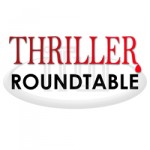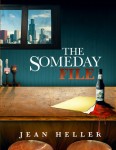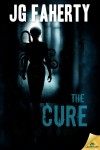

May 25 – 31: “Have you used the American Psychological Association’s DSM V to help develop characters?”
 The Diagnostic and Statistical Manual of Mental Disorders (DSM) is the handbook used by health care professionals in the United States and much of the world as the authoritative guide to the diagnosis of mental disorders. This week ITW Members Wendy Tyson, Cat Connor, Linell Jeppsen, JG Faherty, Jean Heller, Colby Marshall and C. E. Lawrence discuss whether they’ve used the DSM V, or previous versions of the Diagnostic and Statistic Manuel of Mental Disorders, to help develop characters.
The Diagnostic and Statistical Manual of Mental Disorders (DSM) is the handbook used by health care professionals in the United States and much of the world as the authoritative guide to the diagnosis of mental disorders. This week ITW Members Wendy Tyson, Cat Connor, Linell Jeppsen, JG Faherty, Jean Heller, Colby Marshall and C. E. Lawrence discuss whether they’ve used the DSM V, or previous versions of the Diagnostic and Statistic Manuel of Mental Disorders, to help develop characters.
~~~~~
 Cat Connor is a Cantabrian who’s lived most of her life as a northerner. (Makes it a bit hard when the Crusaders play the Hurricanes but apart from that it’s not too bad.) She shares her office with a retired racing greyhound called Romeo and Missy the fat grey cat. Luckily the animals don’t mind loud music. Hosting a fortnightly writing workshop at the Upper Hutt City Library: A Writer’s Plot, is something Cat truly enjoys, and she’s been doing so for 3 years. A coffee addict, lover of pinot, and Jose Cuervo tequila, Cat has been described as irresistible, infectious, and addictive. She believes music is as essential to life as breathing. Cat is a member of The New Zealand Society of Authors and International Thriller Writers. Her latest book, databyte, is longlisted for the 2015 Ngaio Marsh best crime novel Award.
Cat Connor is a Cantabrian who’s lived most of her life as a northerner. (Makes it a bit hard when the Crusaders play the Hurricanes but apart from that it’s not too bad.) She shares her office with a retired racing greyhound called Romeo and Missy the fat grey cat. Luckily the animals don’t mind loud music. Hosting a fortnightly writing workshop at the Upper Hutt City Library: A Writer’s Plot, is something Cat truly enjoys, and she’s been doing so for 3 years. A coffee addict, lover of pinot, and Jose Cuervo tequila, Cat has been described as irresistible, infectious, and addictive. She believes music is as essential to life as breathing. Cat is a member of The New Zealand Society of Authors and International Thriller Writers. Her latest book, databyte, is longlisted for the 2015 Ngaio Marsh best crime novel Award.
 Most of Jean Heller’s career was as an investigative and projects reporter and editor in New York City, Washington, D.C. and St. Petersburg Florida. Her career as a novelist began in the 1990s with the publication of the thrillers, “Maximum Impact” and “Handyman” by St. Martin’s Press. Then life intervened and postponed her new book, “The Someday File,” to publication in late 2014. Jean has won the Worth Bingham Prize, the Polk Award, and is an eight-time Pulitzer Prize nominee.
Most of Jean Heller’s career was as an investigative and projects reporter and editor in New York City, Washington, D.C. and St. Petersburg Florida. Her career as a novelist began in the 1990s with the publication of the thrillers, “Maximum Impact” and “Handyman” by St. Martin’s Press. Then life intervened and postponed her new book, “The Someday File,” to publication in late 2014. Jean has won the Worth Bingham Prize, the Polk Award, and is an eight-time Pulitzer Prize nominee.
 JG Faherty is the author of six novels, seven novellas, and more than 50 short stories. His latest novel is THE CURE, a paranormal thriller about a veterinarian who can heal by laying hands. He has been a finalist for the Bram Stoker Award® and the ITW Thriller Award. To learn more, please visit his blog and follow him on Facebook and Twitter.
JG Faherty is the author of six novels, seven novellas, and more than 50 short stories. His latest novel is THE CURE, a paranormal thriller about a veterinarian who can heal by laying hands. He has been a finalist for the Bram Stoker Award® and the ITW Thriller Award. To learn more, please visit his blog and follow him on Facebook and Twitter.
 Wendy Tyson is an author, lawyer and former therapist whose background has inspired her mysteries and thrillers. The first Allison Campbell mystery, KILLER IMAGE, was named a best mystery for book clubs in 2014 by Examiner.com, and the third Campbell installment, DYING BRAND, is due out on May 5, 2015. Wendy lives near Philadelphia with her husband, three sons and two muses, dogs Molly and Driggs.
Wendy Tyson is an author, lawyer and former therapist whose background has inspired her mysteries and thrillers. The first Allison Campbell mystery, KILLER IMAGE, was named a best mystery for book clubs in 2014 by Examiner.com, and the third Campbell installment, DYING BRAND, is due out on May 5, 2015. Wendy lives near Philadelphia with her husband, three sons and two muses, dogs Molly and Driggs.
 Carole Bugge (C. E. Lawrence) is the author of nine published novels, award-winning plays, musicals, poetry and short fiction. A two time Pushcart Poetry Prize nominee, her most recent Lee Campbell thrillers are Silent Slaughter and Silent Stalker, under the pen name C. E. Lawrence. Her short stories were selected for the two most recent Mystery Writers of America anthologies. Her Sherlock Holmes novels, The Star of India and The Haunting of Torre Abbey, have recently been reissued, along with her Claire Rawlings mystery series.
Carole Bugge (C. E. Lawrence) is the author of nine published novels, award-winning plays, musicals, poetry and short fiction. A two time Pushcart Poetry Prize nominee, her most recent Lee Campbell thrillers are Silent Slaughter and Silent Stalker, under the pen name C. E. Lawrence. Her short stories were selected for the two most recent Mystery Writers of America anthologies. Her Sherlock Holmes novels, The Star of India and The Haunting of Torre Abbey, have recently been reissued, along with her Claire Rawlings mystery series.
 Colby Marshall is especially qualified to write about grapheme-color synesthesia as she has this rare condition. She is a member of International Thriller Writers and Sisters in Crime, and is a contributing columnist for M Food and Culture, a local Georgia magazine.
Colby Marshall is especially qualified to write about grapheme-color synesthesia as she has this rare condition. She is a member of International Thriller Writers and Sisters in Crime, and is a contributing columnist for M Food and Culture, a local Georgia magazine.
 Linell Jeppsen is a writer of science fiction and fantasy. Her vampire novel, Detour to Dusk, has received over 44- four and five star reviews. Her novel Story Time, with over 130- 4 and 5 star reviews, is a science fiction, post-apocalyptic novel, and has been touted by the Paranormal Romance Guild, Sandy’s Blog Spot, Coffeetime Romance, Bitten by Books and 64 top reviewers as a five star read, filled with terror, love, loss, and the indomitable beauty and strength of the human spirit. Story Time was also nominated as the best new read of 2011 by the PRG! Her dark fantasy novel, Onio (a story about a half-human Sasquatch who falls in love with a human girl), was released in December 2012 and won 3rd place as the best fantasy romance of 2012 by the PRG reviewers guild.
Linell Jeppsen is a writer of science fiction and fantasy. Her vampire novel, Detour to Dusk, has received over 44- four and five star reviews. Her novel Story Time, with over 130- 4 and 5 star reviews, is a science fiction, post-apocalyptic novel, and has been touted by the Paranormal Romance Guild, Sandy’s Blog Spot, Coffeetime Romance, Bitten by Books and 64 top reviewers as a five star read, filled with terror, love, loss, and the indomitable beauty and strength of the human spirit. Story Time was also nominated as the best new read of 2011 by the PRG! Her dark fantasy novel, Onio (a story about a half-human Sasquatch who falls in love with a human girl), was released in December 2012 and won 3rd place as the best fantasy romance of 2012 by the PRG reviewers guild.
- LAST GIRL MISSING with K.L. Murphy - July 25, 2024
- CHILD OF DUST with Yigal Zur - July 25, 2024
- THE RAVENWOOD CONSPIRACY with Michael Siverling - July 19, 2024
